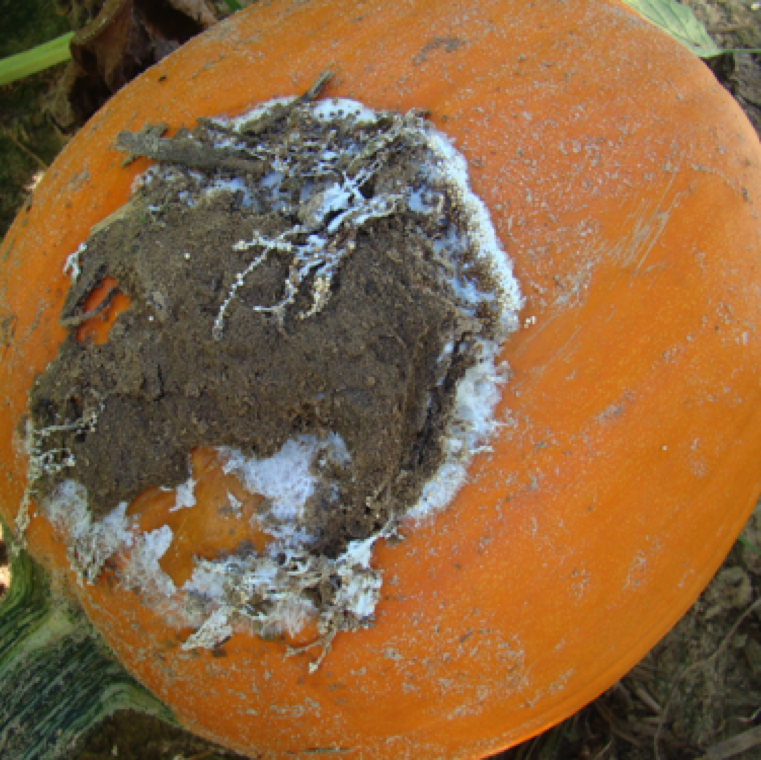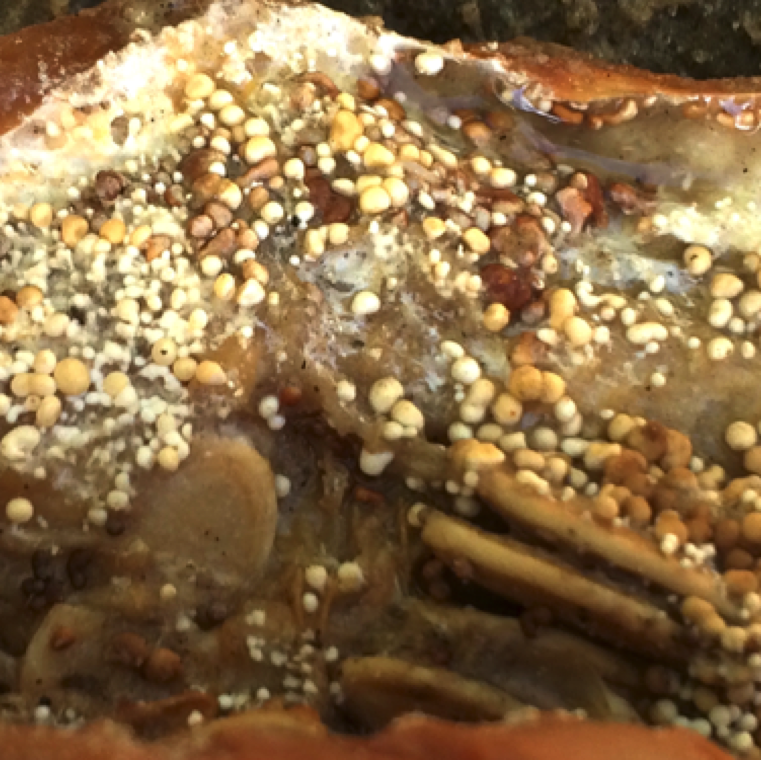

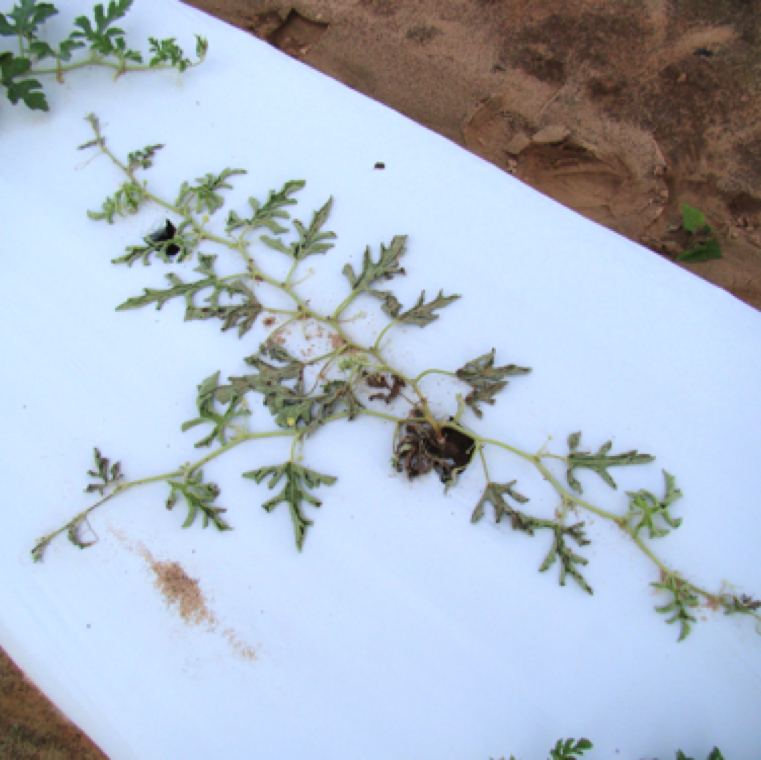
Southern blight causes wilting of cucurbits due to infection on the main stem at the collar region. The pathogen is soil-borne and the disease can be an issue during warm weather seasons.
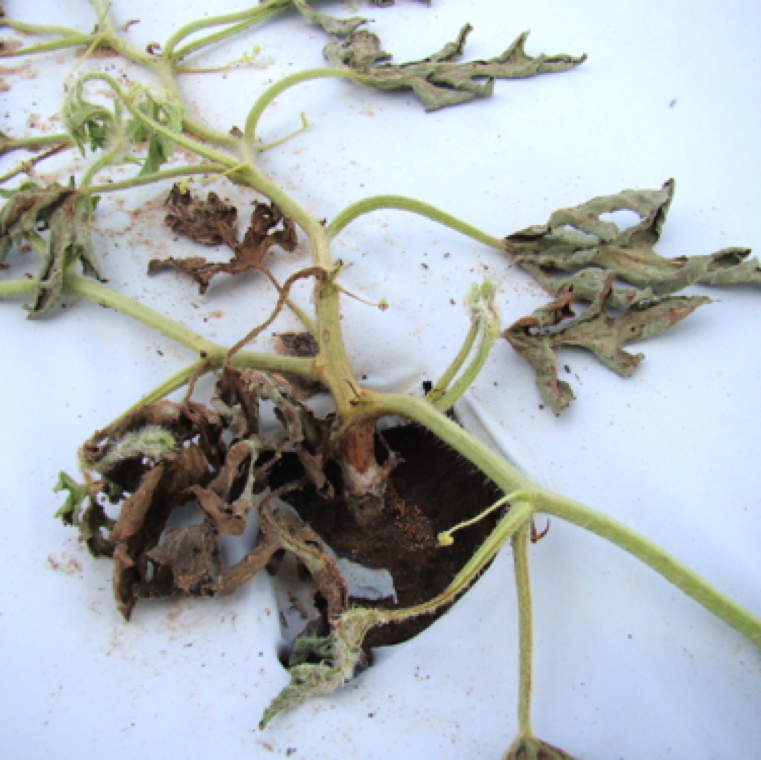
Wilting symptoms resemble that of Fusarium wilt, but upon careful examination you may find white mycelial growth and mustard like reproductive bodies called sclerotia on the soil and on the stem.
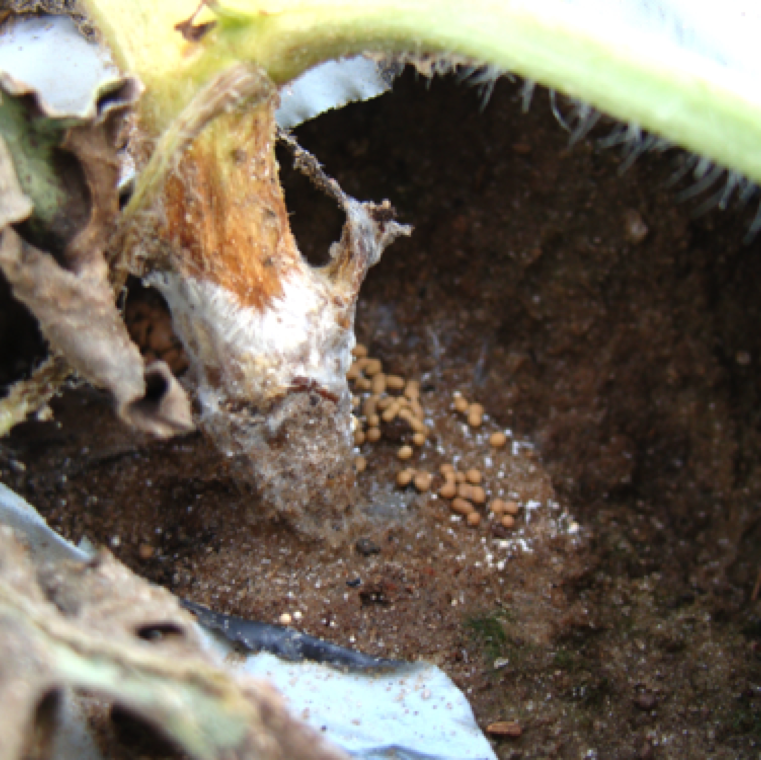
Mycelial growth affected the base of the plant restricted flow of water to the plants and brown matured sclerotia can be seen on the stem and on the top of the soil.
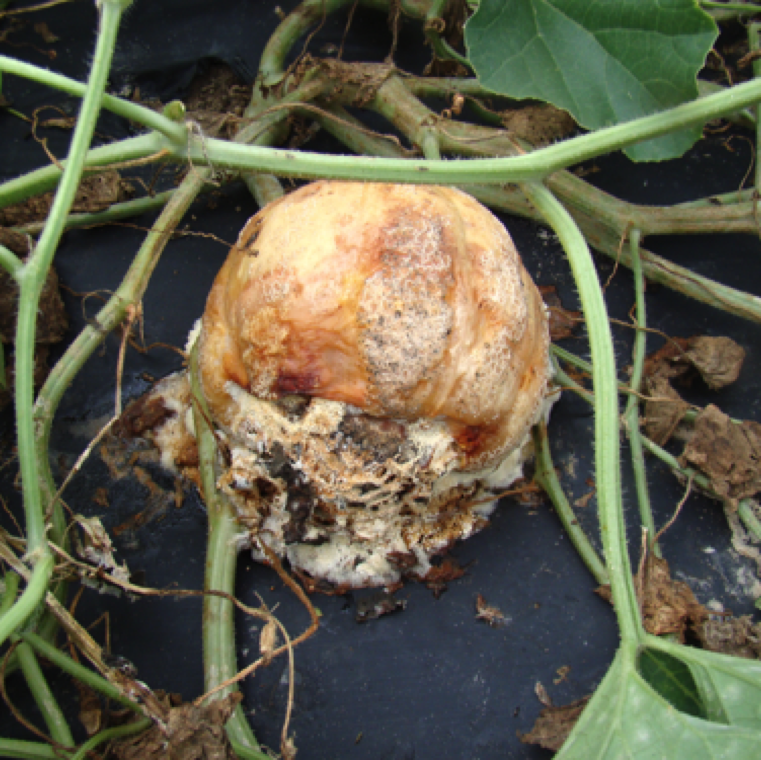
Southern blight affects fruits directly and causes a white mycelial growth on the underside of the fruit leading to severe fruit rot on cucurbits as seen in this case on cantaloupe.
SCLEROTIUM ROT
Fungal causal agent: Sclerotium rolfsii
Cucurbit diseases
